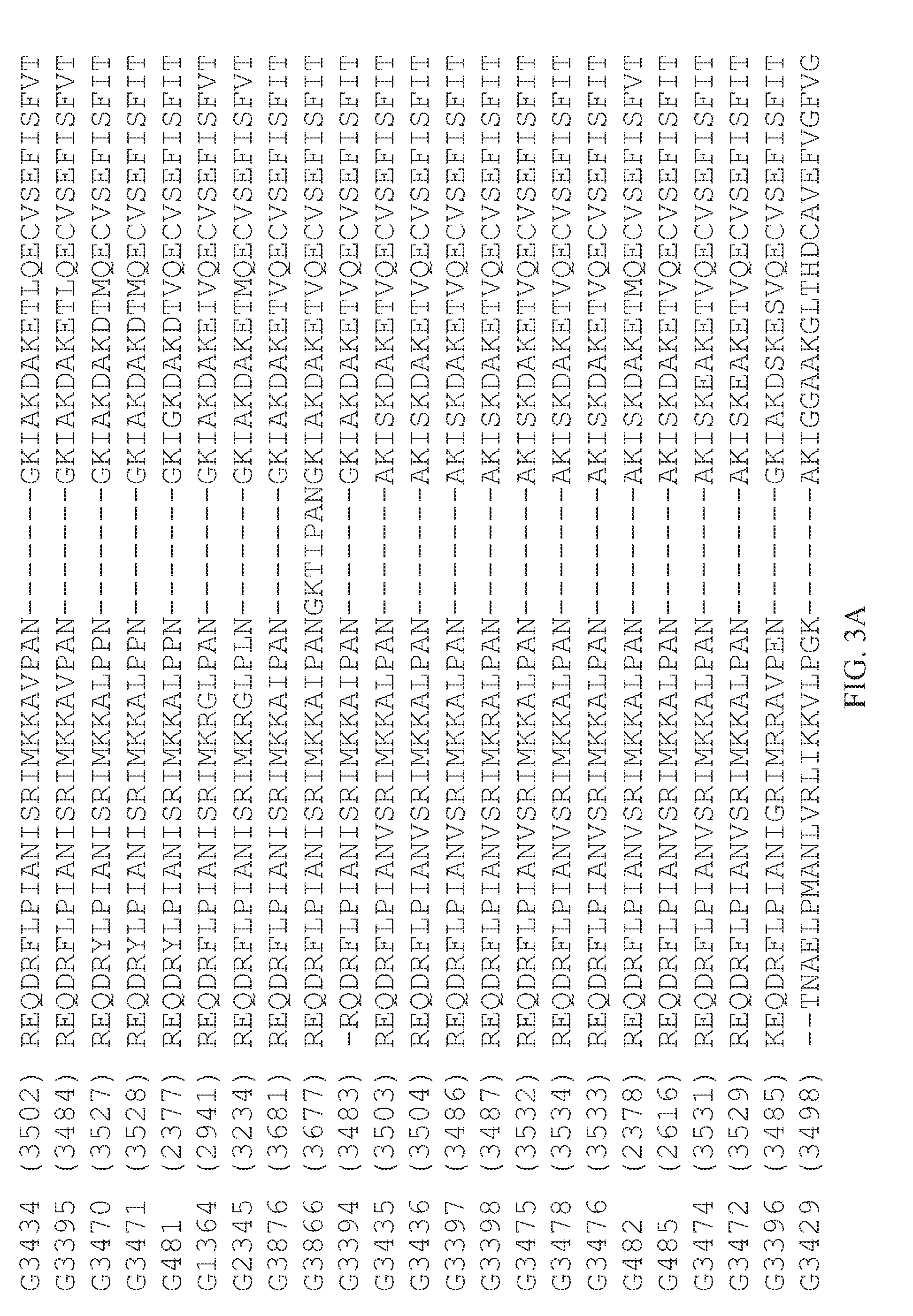Stress tolerance in plants
a stress tolerance and plant technology, applied in the field of stress tolerance in plants, can solve the problems of high stress, low water availability, and water deficit in plant cells, and achieve the effects of greater resistance to erysiphe, greater resistance to sclerotinia, and greater resistance to botrytis
- Summary
- Abstract
- Description
- Claims
- Application Information
AI Technical Summary
Benefits of technology
Problems solved by technology
Method used
Image
Examples
examples
[0215]It is to be understood that this invention is not limited to the particular devices, machines, materials and methods described. Although particular embodiments are described, equivalent embodiments may be used to practice the invention.
[0216]The invention, now being generally described, will be more readily understood by reference to the following examples, which are included merely for purposes of illustration of certain aspects and embodiments of the present invention and are not intended to limit the invention. It will be recognized by one of skill in the art that a transcription factor that is associated with a particular first trait may also be associated with at least one other, unrelated and inherent second trait which was not predicted by the first trait.
example i
Project Types
[0217]A variety of constructs were used to modulate the activity of lead transcription factors, and to test the activity of orthologs and paralogs in transgenic plant material. This platform provided the material for all subsequent analysis.
[0218]Transgenic lines from each particular transformation “project” were examined for morphological and physiological phenotypes. An individual project was defined as the analysis of lines for a particular construct or knockout (for example this might be 35S lines for a lead gene, 35S lines for a paralog or ortholog, lines for an RNAi construct, lines for a GAL4 fusion construct, lines in which expression is driven from a particular tissue specific promoter, etc.) In the current lead advancement program, four main areas of analysis were pursued, spanning a variety of different project types (e.g., promoter-gene combinations).
(1) Overexpression / Tissue-Specific / Conditional Expression
[0219]The promoters used in our experiments were sel...
example ii
Promoter Analysis
[0238]A major component of the program was to determine the effects of ectopic expression of transcription factors in a variety of different tissue types, and in response to the onset of stress conditions. Primarily this was achieved by using a panel of different promoters via a two-component system.
[0239]Component 1: promoter driver lines (Promoter::LexA / GAL4). In each case, the first component (Promoter::LexA / GAL4) comprised a LexA DNA binding domain fused to a GAL4 activation domain, cloned behind the desired promoter. These constructs were contained within vector backbone pMEN48 (Example III) which also carried a kanamycin resistance marker, along with an opLexA::GFP reporter. The GFP was EGFP, an variant available from Clontech (Mountain View, Calif.) with enhanced signal. EGFP is soluble in the cytoplasm. Transgenic “driver lines” were first obtained containing the Promoter::LexA / GAL4 component. For each promoter driver, a line was selected which showed reprod...
PUM
| Property | Measurement | Unit |
|---|---|---|
| nucleic acid sequence | aaaaa | aaaaa |
| resistance | aaaaa | aaaaa |
| hyperosmotic stress | aaaaa | aaaaa |
Abstract
Description
Claims
Application Information
 Login to View More
Login to View More - R&D
- Intellectual Property
- Life Sciences
- Materials
- Tech Scout
- Unparalleled Data Quality
- Higher Quality Content
- 60% Fewer Hallucinations
Browse by: Latest US Patents, China's latest patents, Technical Efficacy Thesaurus, Application Domain, Technology Topic, Popular Technical Reports.
© 2025 PatSnap. All rights reserved.Legal|Privacy policy|Modern Slavery Act Transparency Statement|Sitemap|About US| Contact US: help@patsnap.com



